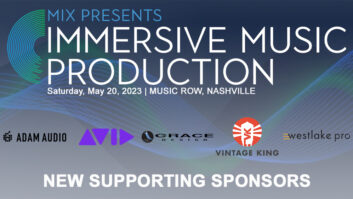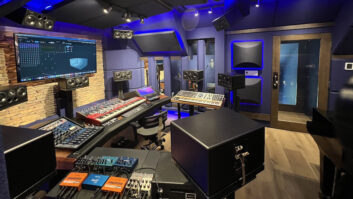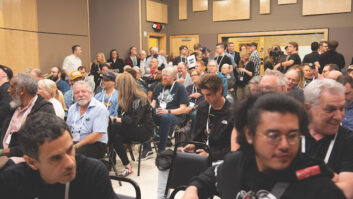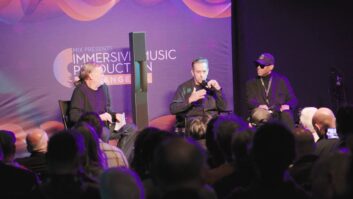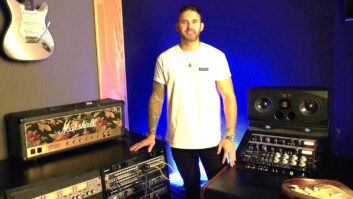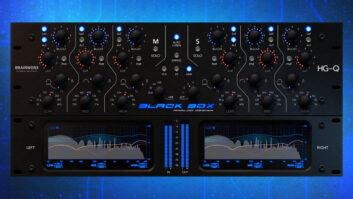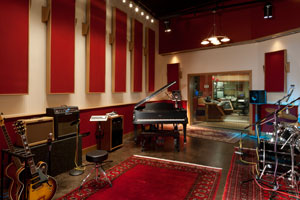
David Earl founded the label in 1997, and from the beginning he had a firm hand in the entire recording process, producing or engineering the majority of the label’s releases. In those days, Severn recordings were made in commercial facilities, and business was handled from his house, but Earl always had a desire to be self-contained. Ultimately, he acquired the label’s first formal address, which was a house in an area rezoned for business. The house was fitted with offices and warehousing upstairs and a studio in the basement.
Over the years, Severn and its artists have enjoyed numerous W.C. Handy/Blues Music Award nominations and gained respect in the worldwide roots-blues scene. The label also branched out a bit with rock, jazz and zydeco titles. Throughout this time, Earl upgraded and added to his equipment, at one point picking up the API Legacy console originally built for Bearsville Studios. That console has gone through several upgrades and additions that integrate DAW workstation controls and seamlessly combines the Studer A800 multitrack with the Pro Tools HD workstation in the mixing process. Continuously adding more electronics and musical instruments, it eventually became apparent that larger, more optimized spaces were in order. The timing was ideal, occurring during a slump in the commercial real estate market. A new space was acquired near Annapolis.
I have been involved in the project since the early days of the label, handling technical support in the studio, as well as the IT for the business. Along the way, we tackled some projects that included building some recording spaces, a custom tube microphone, and a 1-inch 2-track mastering machine.
When the time came for Earl to configure the new space, he felt most comfortable working with me in the functional layout and in determining the relationships of sonic performance versus costs. He was well aware that the time to solve problems is when pencil is against paper. Especially important to him was consideration of the acoustic feel of the recording spaces.
“If you hear recordings by Motown, Stax or Chess, you recognize that each have a ‘sound’ that identifies the label,” Earl says. “Of course, each record sounds different, but there are threads of similarity that tie them together. I want an identifiable sound for Severn Records, which comes from the equipment, techniques and musicians. But it also comes from the sound of the studio.”
Having a great-sounding main studio was key to the design—he wanted it to be lively and reverberant, not muffled and anechoic like many commercial studios. As he explains: “I usually record basic tracks with all the musicians in the room except for any scratch vocals, which are done in an iso room. Often the electric instruments are captured with a direct box and simultaneously miked in remote spaces, so I can use the room mics to capture the drums’ room sound exclusively, and I can use that freely in any mix.”
Guitars and keyboards are usually captured direct, as well as miked, when tracking. If the large room sound or another amp sound is needed, that can be captured later as an overdub in the main room using the direct track’s performance as a source, providing all sorts of sonic possibilities.
Beyond having a pleasing sonic character, the rooms must have low ambient noise and a high degree of sonic isolation among the spaces. Earl settled on an NC15 noise rating and separation that would exceed STC56. As any designer can tell you, each subsequent decibel improvement is much more difficult and expensive than the previous decibel. This level of performance dictated double-wall construction with three layers of 5/8-inch drywall on each wall, glass that is almost ¾-inch thick, and some rather costly doors. Each room rests on its own concrete slab. The air conditioning system consists of a single compressor feeding coolant to four separate air handlers. This removes any ductwork as a source of flanking noise that would allow sound to pass across spaces. The air handlers use large squirrel-cage-style variable speed fans. They are essentially in constant motion, stirring air around at a low velocity. Ductwork and registers are custom-designed to preserve laminar flow and prevent that “dragon breath” sound that typical systems emit.

Control Room
The depth of the control room was fixed by the overall width of the building. The first round of plans had specified ATC SCM300 loudspeakers, and, based on the listening triangle, a control room envelope was determined. After some discussions with the manufacturer, ATC offered to make custom wedge-shaped cabinets that arrayed the drive units in a vertical configuration. This allowed the loudspeakers to fit more snugly to the front wall of the room, moving them away from the listening position and proportionally further apart. After applying all the cascading criteria, the revision of the room was 20 percent larger. This small change in cabinet shape vastly improved the ergonomics and traffic pattern of the control room, not to mention the low-frequency character.
Studio & Iso
In order to banish hum once and for all, the two recording spaces are each enclosed in a Faraday shield. Between the first and second layers of drywall, a layer of galvanized steel sheet is screwed into the metal studs. The added mass figures into the wall’s isolation performance, but its most important function is to divert electromagnetic fields to ground. Windows are a necessity, but they present an obvious entry point for electromagnetic fields. In select locations, the hole gets electrostatically “plugged” with a special glass that contains an electrically conductive pyrolytic coating. This glass is normally used in commercial refrigerator doors because it resists condensation. In this application, it’s the conductivity that makes it useful. The coating is chemically passive, so the coated side can be on an external surface, which is then oriented to complete the electrical contact inside the frame. It is also completely transparent so it won’t be visible like a screen or metallized surface.
The main target of the shielding is hum, but Wi-Fi and cell phone signals are effectively shut down as well. A Wi-Fi transmitter hooked into the company network is located in the studio to restore that function when necessary.
Lighting must be powered from direct current to avoid reintroducing 60Hz fields into the room. We designed converters that go into each circuit for that purpose. Code inspectors are somewhat uncomfortable with the use of electrical components such as diodes and capacitors, and are unsure of the suitability of wire, switches and techniques that are normally used for AC. Fortunately, the earliest codes date back to Edison’s day when DC was the norm. Much is permissible within existing standards. While DC switching could be done in the room, the light switches in these rooms are actually Crestron controllers that signal back to the Crestron rack back near the breaker panel on the AC end of the circuits. This provides both dimming and remote control. Because the instrument amplifiers are typically not in the same space as the instrument pickups, there is very little opportunity to pick up stray noises from the amp’s electromagnetic fields. Now the humbucking configuration is an artistic choice and not a solution for a problem.
Having a Crestron system provides other features than the ability to dim DC-powered lighting. The equipment can be powered up and down in a predetermined sequence, and the thermostats can be controlled and programmed remotely. Lights are intuitively controlled where a person would expect a switch to be. Besides a master controller, there is also “an app for that” in the iPhone and iPad.
All of the electrical receptacles in recording rooms have exterior-grade metal covers, so the unused outlets remain shielded at all times.
Testing the performance of the shielding for hum removal turned out to be rather simple. Two devices were built that plug into a guitar amplifier and can be used to locate the source and determine the type of interference. One, the electromagnetic detector, is simply a single-coil guitar pickup mounted inside a PVC electrical fixture. For electrostatic fields, an aluminum plate covered in a pair of self-adhesive floor tiles is attached to a PVC handle. With these detectors, it is very easy to identify the source and nature of any interference.
Wiring
The perimeter of each of the recording rooms has a wainscot that offers several useful advantages. They are stuffed to provide some absorption. The front face is made of fabric-covered pegboard, so equipment and walls are protected from the indignities of small collisions. The top is a wood “shelf” about six inches deep to accommodate those small things that musicians need on hand, such as tuners, phones or drinks, that would be otherwise somewhere in the middle and in the way, only to be stepped on or knocked over. Most importantly, the wainscots provide a path for all the wiring and locations for the panels in the rooms. The front face is easily removed to make changes.

The penetrations for wiring are done in a minimum of locations, and the contractor was careful not to break the envelope of the room without consultation. Most audio signals pass in and out of the room below the floor in small pits that are filled with sand. Each access point feeds into the wainscot. It is much easier to control flanking sound when the penetrations are limited to a handful of locations.
Additional Spaces
David Earl’s office was also designed with sound quality in mind, although to somewhat relaxed specifications compared to the main spaces. Beyond the obligatory phone and desk, he has a pair of near-field speakers for audition. There is a Sonic Solutions mastering system and a smaller Pro Tools rig to allow for some simple editing and mastering that doesn’t require the heavy iron. It has basic trapping and reflection controls that make the space useful for critical listening. This room, like every other space right down to the loading dock, is equipped with audio tielines. Any space can be easily tapped for the recording effort. This includes having the ability to support a Leslie cabinet with its multipin input and all the mics that it would require. If past experience is any guide, each of these spaces will be used for an amp when tracking or for its unique sonic character or reverb fingerprint.
Results
All of this careful designing and planning would be meaningless if it were carelessly constructed. The contractor, Winchester Construction, was meticulous throughout the process—not doing anything that might compromise the performance of the design. It cannot be stressed how important it is to have a contractor that realizes the unique tolerances required of a professional studio. They would always ask before doing anything they felt might have sonic implications. In one case, the county added a fire suppression system to the building, and the subcontractor began approaching the installation in the same manner they normally do. This would have resulted in envelopes being compromised and wall systems being coupled. The contractor quickly recognized the potential for disaster and convened a group to properly integrate the system in the design.
In the end, all design goals were met or surpassed. An example that gives an idea of the performance of the sonic isolation occurred during the wiring phase. As it happened, a category 1 hurricane visited at the same time we were installing panels. Inside the studio, with the door closed, the loudest audible sound was the thermostat in the soldering iron.
The new facility was quickly applied to several projects that were put on hold during the transition. So far, Severn has completed projects for Lou Pride and Tad Robinson, and then began new releases for Bryan Lee, the Nighthawks and the Fabulous Thunderbirds. Many more projects are still in the planning stages, so expect to hear much more from Severn Records in the future.
